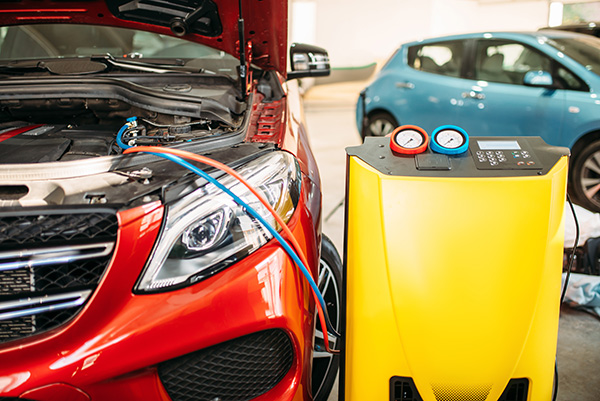
If you’ve had A/C work done on a newer vehicle, you may have heard the term “1234yf refrigerant” come up. It sounds technical, and for many drivers, the difference between 1234yf and the older R-134a refrigerant isn’t immediately clear. But there’s a reason for the switch—and understanding why it matters can help you stay informed when your car’s A/C needs service.
So what exactly is 1234yf? Why is it replacing R-134a? And does it change anything for the average driver or how their vehicle gets serviced?
A Quick Look at Refrigerants in Automotive A/C Systems
Refrigerants are the lifeblood of your car’s air conditioning system. They circulate through the system, absorbing heat from inside the cabin and releasing it outside, keeping you cool even on the hottest days. For years, R-134a was the go-to refrigerant for most vehicles, replacing the ozone-depleting R-12 back in the 1990s.
But while R-134a is better for the ozone layer, it still has a high global warming potential (GWP). As concerns about climate change and emissions have grown, the automotive industry has looked for safer, more environmentally friendly alternatives—and that’s where 1234yf comes in.
What Is 1234yf
1234yf (also known as HFO-1234yf) is a newer refrigerant developed specifically to replace R-134a in automotive systems. It offers the same cooling performance but with a dramatically lower global warming potential—about 99.7% lower than R-134a.
While R-134a has a GWP of around 1,430, 1234yf comes in at a GWP of just 4. That drop makes it one of the most climate-friendly options currently available for air conditioning systems in vehicles.
Why the Change
The switch from R-134a to 1234yf isn’t just a trend—it’s driven by environmental regulations. The U.S. Environmental Protection Agency (EPA), along with international agreements like the Kigali Amendment to the Montreal Protocol, have pushed automakers to phase out high-GWP refrigerants.
As a result, nearly all new cars sold in the U.S. since 2021 come equipped with 1234yf. Automakers made the switch to comply with regulations and help reduce the environmental impact of vehicle A/C systems.
What Does This Mean for Your Vehicle
If your car is a model year 2015 or newer, there’s a good chance it uses 1234yf. You can usually find the type of refrigerant listed on a sticker under the hood, near the radiator or A/C system components.
If your car uses 1234yf, it’s important to stick with it—mixing refrigerants is not allowed and can damage the system. This also means that not all shops are equipped to service 1234yf systems. Specialized equipment is needed to recover, recharge, and test the system properly.
Is 1234yf More Expensive
One of the first things drivers notice about 1234yf is the cost—it’s significantly more expensive than R-134a. This is mainly due to production costs, licensing, and the specialized equipment required for servicing. However, as more vehicles use 1234yf and the market grows, prices are expected to continue coming down.
Still, the upfront cost is balanced by long-term environmental benefits and by the fact that newer systems are more efficient, often requiring less refrigerant to do the same job.
Is 1234yf Safe
Some drivers have raised concerns about 1234yf being mildly flammable. While this is technically true, it has been extensively tested and approved for automotive use by regulatory bodies worldwide. In real-world conditions, it’s just as safe as R-134a when handled properly.
Vehicles using 1234yf are designed with this in mind, and A/C systems include safety mechanisms to prevent any potential risks.
H B Auto & AC – 1234yf A/C Service in Beach, CA
At H B Auto & AC in Beach, CA, we’re fully equipped to service modern A/C systems that use 1234yf refrigerant. Whether you need a recharge, leak inspection, or full system diagnosis, our technicians understand the technology and the regulations that come with it. If your car’s A/C isn’t blowing cold—or you’re not sure which refrigerant it uses—we’re here to help you stay cool and compliant.